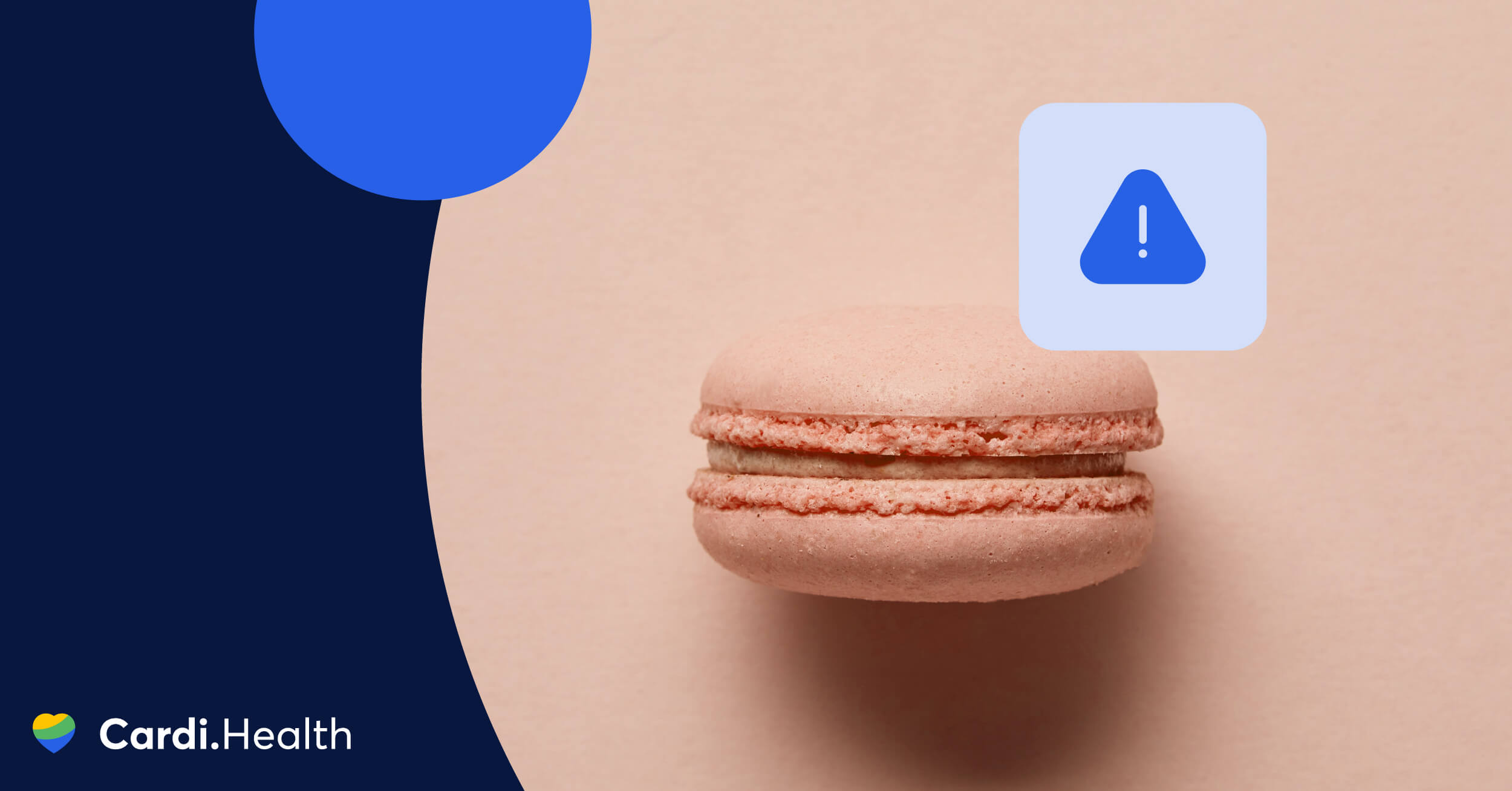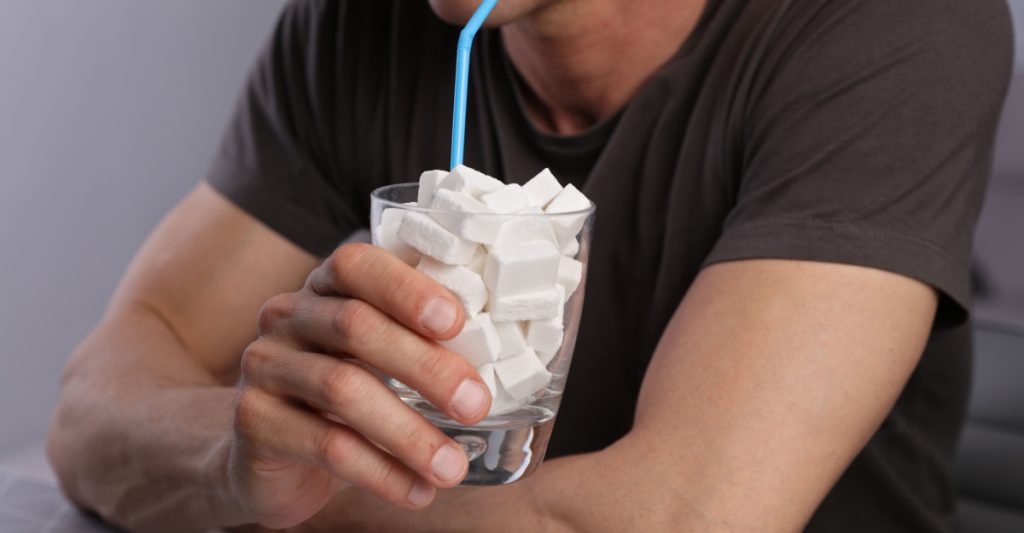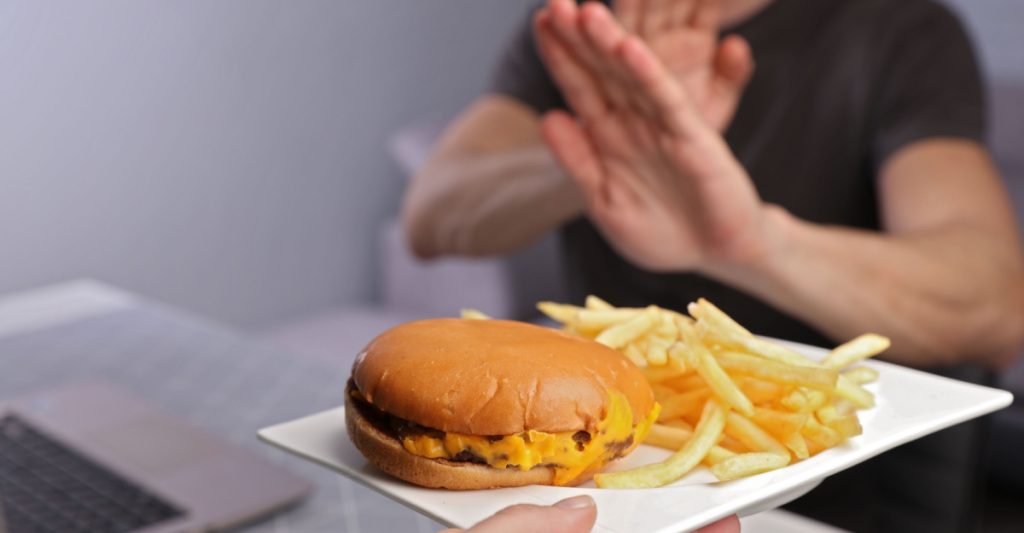Foods to Avoid With High Blood Pressure: A Comprehensive Guide
High blood pressure (BP) is a prevalent health problem that affects many people worldwide. In fact, about 1.28 billion adults ages 30–79 have hypertension, making it a leading cause of premature death.
Taking blood pressure medications and making changes to our lifestyle are common ways to manage blood pressure and prevent any cardiovascular disease. Among such approaches, eating healthy foods holds significant importance as it can both lower blood pressure and keep your heart healthy in the long run.
In this guide, we’ll explore the dietary choices that are not recommended for people with hypertension so you can make well-informed decisions and reduce blood pressure if necessary.

Master your heart health now
Take part in our 60sec quiz and get a heart health plan tailored just for you.
Contents
Food High in Sodium and Salt
Sodium is one of the things you need to watch out for if you have high blood pressure. Simply put, the more sodium-rich foods you eat, the more water your body retains. This extra water in your blood vessels makes the pressure go up, and that’s why your blood pressure goes up too.
In general, the American Heart Association recommends that people should have no more than 1,500 milligrams of sodium a day to manage high blood pressure.
Some foods that are typically high in sodium include:
- Processed foods
- Canned foods
- Fast food
Now let’s take a look at a few tips that can help you eat less sodium:
- Cook at home: You can choose ingredients with less sodium and use herbs and spices to make your food tasty instead of just using salt.
- Read labels: Look at the labels on food packages and try to pick foods with less sodium or those that say “low-sodium” or “no added salt.”
- Choose fresh foods: Fresh fruits, vegetables, and lean meat naturally contain less sodium.
Trans Fats and Saturated Fats

Another thing to avoid when you have high blood pressure are trans and saturated fats.
Trans fats are artificially created fats formed during a process called hydrogenation, which converts liquid oils into solid fats. Saturated fats, on the other hand, are naturally occurring fats found in animal products such as fatty meats, whole milk, cheese, butter, and tropical oils like coconut and palm oil.
Both fats raise LDL cholesterol levels, which can result in high blood pressure, and studies show that trans fats increase diastolic blood pressure and systolic blood pressure levels.
Foods high in trans fats:
- Deep-fried foods
- Commercially baked goods
- Margarine and shortening
- Processed snacks
Foods high in saturated fats:
- Fatty cuts of meat
- High-fat dairy products
- Processed meats
- Coconut and palm oil
To reduce trans fat and saturated fat intake, consider the following tips:
- Choose healthier fats: Go for unsaturated fats like olive oil, avocado, nuts, and seeds.
- Trim visible fat: When it comes to meat, remove any visible fat before cooking.
- Use leaner cuts: Choose leaner cuts of meat such as skinless poultry, fish, and lean cuts of beef or pork.
- Cook using healthier methods: Instead of deep-frying, try baking, grilling, steaming, or sautéing your food.
- Check food labels: As a rule of thumb, always check the labels for trans fat and saturated fat content. Choose products with low or zero grams of trans fats, and go for those with lower amounts of saturated fat.
Start managing your heart health now!
Find out what works for you with this 60sec quiz.

Processed and Packaged Foods
Processed and packaged foods are “perfect” for high blood pressure because they contain most of the harmful ingredients that affect it. As we already mentioned earlier, they have lots of sodium that can elevate blood pressure, as well as trans fats, which have been shown to also raise blood pressure.
And let’s not forget that added sugars found in processed foods can lead to weight gain and insulin resistance, both of which can contribute to hypertension.
To maintain healthy blood pressure, you can:
- Choose fresh, whole foods.
- Incorporate a variety of fruits, vegetables, whole grains, lean proteins, and healthy fats into your diet, or consider the DASH diet.
- Cook your meals and make your snacks at home.
Foods With Added Sugars

It’s no secret that added sugars can have harmful effects on our health, including the potential to increase blood pressure and even lead to chronic diseases such as diabetes. All of these factors can affect how your heart works and how your blood pressure is regulated.
Here’s a list of foods high in added sugars that you should try to avoid or eat less of:
- Sugary drinks: Soda, fruit juices, energy drinks, sweetened iced tea, and sports drinks
- Desserts: Cakes, cookies, pastries, ice cream, and candy
- Breakfast cereals: Most sugary cereals, especially those made for kids
- Flavored yogurt
- Condiments and sauces: Ketchup, barbecue sauce, and salad dressings
Some tips to help you cut down on the amount of added sugar include the following:
- Check food labels: Once again, look for foods and drinks that have low or no added sugars.
Choose whole foods: Try to eat more whole foods that haven’t been processed too much. - Drink water or unsweetened drinks: Drink water, herbal tea, or drinks that don’t have any added sugar.
- Limit desserts and sweets: Try not to eat too many desserts or sweet treats that have a lot of sugar.
- Cook and bake at home: This way, you have more control over what goes into your food, including how much sugar you use, so it helps lower blood pressure more easily.
Caffeine and Alcohol
It’s recommended to limit caffeine consumption to 4 cups of coffee. For alcohol, try to keep it to one drink per day for women and up to two drinks per day for men to maintain healthy blood pressure.
Keep in mind that certain beverages should be avoided due to their high caffeine or alcohol content.
Energy drinks, for example, often contain high levels of caffeine. Similarly, too much alcohol can lead to negative effects on blood pressure.
High Cholesterol Foods
High cholesterol foods can also elevate blood pressure. Elevated cholesterol can lead to plaque buildup in the arteries, restricting blood flow and increasing blood pressure. So, it’s good to keep an eye out for foods that are high in cholesterol and opt for healthier choices instead.
Here are some examples of foods high in cholesterol:
- Fatty cuts of meat
- Full-fat dairy products
- Shellfish
To manage cholesterol levels, consider the following tips:
- Choose lean cuts of meat and poultry, and remove visible fat before cooking
- Opt for low fat dairy or skim dairy products
- Include more plant-based protein sources like legumes, tofu, and nuts
- Incorporate whole grains, fruits, and vegetables into your diet, or start the DASH diet
- Use healthy cooking methods such as grilling, baking, or steaming instead of frying
Start managing your heart health now!
Find out what works for you with this 60sec quiz.

Potentially Harmful Food Additives
Certain food additives have the potential to increase blood pressure. If you’re keen on keeping those numbers in check, it’s a good idea to steer clear of these common food additives:
- Monosodium glutamate (MSG), often found in processed foods and restaurant dishes
- Artificial sweeteners like aspartame and saccharin, commonly used in diet sodas and sugar-free products
- Artificial food coloring, usually used to brighten and improve the appearance of everything from candies to condiments
- Sodium nitrite, frequently found in processed meats
As always, check food labels carefully to help you make healthier choices. Look out for these additives in ingredient lists and choose products that don’t contain them. Additionally, focusing on whole, unprocessed foods and preparing meals at home can help reduce exposure to harmful food additives.
Understanding High Blood Pressure
High blood pressure means that the force of blood pushing against the walls of our arteries is too strong. Developing high blood pressure can be influenced by your genes, age, and unhealthy dietary approaches. If not managed properly, it can harm your blood vessels and heart. Some high blood pressure symptoms include blurred vision, chest pains, and dizziness.
You can lower blood pressure by making some changes to your diet or practicing certain eating patterns – like the DASH diet. Eating fruits, vegetables, whole grains, lean proteins, and low-fat dairy products while limiting sodium, unhealthy fats, and added sugars, has been shown to help lower blood pressure.
Tips for Starting a Heart-Healthy Diet

Now that we’ve discussed foods that should be avoided when dealing with elevated blood pressure, let’s talk about starting a heart-healthy diet.
As you begin your heart health journey, it can be helpful to use tools that support your nutritional goals. One such tool is the Cardi Health application, which is designed to help lower blood pressure through personalized nutrition.
By incorporating Cardi Health into your daily routine, you can receive guidance and support in making heart-healthy choices based on your individual needs and preferences. With the app, you can easily manage your blood pressure, take charge of your health, and nourish your body with the right foods.
In addition, let’s take a look at a few more tips to get you started on your health journey.
Importance of portion control
Controlling your portion sizes is crucial for preventing heart disease. Studies have shown that portion control can help with weight management and even blood pressure control.
To practice portion control, you can:
- Use smaller plates and bowls.
- Measure your food.
- Be mindful of serving sizes.
British Nutrition Foundation suggests these portion sizes:
- Fruit and vegetables: 5+ portions a day
- Starchy carbohydrates: 3–4 portions a day
- Beans, fish, eggs, and other proteins: 2–3 portions a day
- Dairy: 2–3 portions a day
Healthy cooking methods
Choosing healthy cooking methods is another essential step in order to lower your blood pressure. Cooking techniques such as steaming, grilling, baking, and stir-frying can help preserve the nutrients in the foods. These methods have been found to retain more vitamins and minerals compared to frying or deep-frying.
Reading food labels
We can’t stress enough the importance of learning how to read food labels. It can empower us to make informed choices about the foods we eat by understanding the information about the nutritional content of products.
Here are some key things to look for on food labels:
- Serving size
- Sodium content
- Added sugars
- Unhealthy fats
Remember, it’s important to compare labels and choose foods that have lower amounts of sodium, added sugars, and unhealthy fats!
Practicing mindful eating
Mindful eating is one of the best practices for managing high blood pressure. It involves paying attention to our food and eating habits and listening to our body’s hunger cues. By eating slowly, savoring the flavors, and being aware of how we feel, we can prevent overeating and make better food choices. Studies have shown that mindful eating can lead to improved dietary habits and better blood pressure control, as well as prevent weight gain.
Choosing smart snacking options
When it comes to snacks, we can make smart choices that support our heart health. Opt for less salty snacks that are nutrient-rich and satisfy cravings without adding excessive sodium, unhealthy fats, or added sugars. Fresh fruit, yogurt, nuts, and homemade trail mix are excellent examples of heart-healthy snacks. These options provide important vitamins, minerals, and fiber while being delicious and satisfying.
Start managing your heart health now!
Find out what works for you with this 60sec quiz.

FAQ
Why should sodium be limited in a high blood pressure diet?
High sodium intake leads to water retention in the body, which increases the volume of blood in vessels, resulting in elevated blood pressure.
How do trans fats and saturated fats affect blood pressure?
Both raise LDL cholesterol levels which can result in increased blood pressure. Specifically, trans fats have been shown to raise both diastolic and systolic blood pressure.
Why are processed and packaged foods not recommended for people with high blood pressure?
These foods often contain harmful ingredients like high amounts of sodium, trans fats, and added sugars, which can elevate blood pressure.
How can the Cardi Health application help with managing high blood pressure?
The Cardi Health application provides personalized nutrition guidance, helping users make heart-healthy choices based on individual needs and preferences.
Key Takeaways
It’s important to try lowering blood pressure by any means necessary – either with blood pressure medications or through lifestyle changes, including dietary choices.
Foods high in sodium, trans and saturated fats, and added sugars should be avoided because they can elevate your blood pressure.
Portion control, healthy cooking methods, reading food labels, practicing mindful eating, and choosing smart snacks can also help lower your blood pressure.
The Cardi Health application is a great tool that can provide personalized nutrition guidance for keeping healthy blood pressure and healthy weight. It is a great addition to your heart-healthy journey package, making it easier for you to make informed decisions about your heart health and even lower high blood pressure.
Related articles
Best Foods to Lower Cholesterol
Does Caffeine Raise Blood Pressure?
Does Drinking Water Lower Blood Pressure?
Causes of High Blood Pressure at Night
10 DASH Diet Breakfasts for a Healthy Start
Heart-Healthy Diet Guide
What Should an 85-Year-Old Blood Pressure Be?
What is Normal Blood Pressure for a 70-Year-Old?
How to Read Blood Pressure: A Comprehensive Guide
Manage your heart health now
Find out what works best for you with this 60sec quiz and get your personalized heart health plan.

